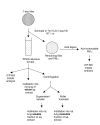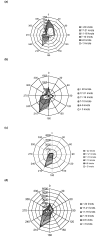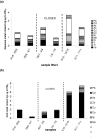The effect of refurbishing a UK steel plant on PM10 metal composition and ability to induce inflammation
- PMID: 15904485
- PMCID: PMC1156955
- DOI: 10.1186/1465-9921-6-43
The effect of refurbishing a UK steel plant on PM10 metal composition and ability to induce inflammation
Abstract
Background: In the year 2000 Corus closed its steel plant operations in Redcar, NE of England temporarily for refurbishment of its blast furnace. This study investigates the impact of the closure on the chemical composition and biological activity of PM10 collected in the vicinity of the steel plant.
Methods: The metal content of PM10 samples collected before during and after the closure was measured by ICP-MS in order to ascertain whether there was any significant alteration in PM10 composition during the steel plant closure. Biological activity was assessed by instillation of 24 hr PM10 samples into male Wistar rats for 18 hr (n = 6). Inflammation was identified by the cellular and biochemical profile of the bronchoalveolar lavage fluid. Metal chelation of PM10 samples was conducted using Chelex beads prior to treatment of macrophage cell line, J774, in vitro and assessment of pro-inflammatory cytokine expression.
Results: The total metal content of PM10 collected before and during the closure period were similar, but on reopening of the steel plant there was a significant 3-fold increase (p < 0.05) compared with the closure and pre-closure samples. Wind direction prior to the closure was predominantly from the north, compared to south westerly during the closure and re-opened periods. Of metals analysed, iron was most abundant in the total and acid extract, while zinc was the most prevalent metal in the water-soluble fraction. Elevated markers of inflammation included a significant increase (p < 0.01) in neutrophil cell numbers in the bronchoalveolar lavage of rats instilled with PM10 collected during the reopened period, as well as significant increases in albumin (p < 0.05). Extracts of PM10 from the pre-closure and closure periods did not induce any significant alterations in inflammation or lung damage. The soluble and insoluble extractable PM10 components washed from the reopened period both induced a significant increase in neutrophil cell number (p < 0.05) when compared to the control, and these increases when added together approximately equalled the inflammation induced by the whole sample. PM10 from the re-opened period stimulated J774 macrophages to generate TNF-alpha protein and this was significantly prevented by chelating the metal content of the PM10 prior to addition to the cells.
Conclusion: PM10-induced inflammation in the rat lung was related to the concentration of metals in the PM10 samples tested, and activity was found in both the soluble and insoluble fractions of the particulate pollutant.
Figures









References
-
- Pope CA., III Particulate pollution and health: a review of the Utah valley experience. J Expo Anal Environ Epidemiol. 1996;6:23–34. - PubMed
-
- Pope CA, III, Schwartz J, Ransom MR. Daily mortality and PM10 pollution in Utah Valley. Arch Environ Health. 1992;47:211–217. - PubMed
-
- Ghio AJ, Devlin RB. Inflammatory lung injury after bronchial instillation of air pollution particles. Am J Respir Crit Care Med. 2001;164:704–708. - PubMed
Publication types
MeSH terms
Substances
LinkOut - more resources
Full Text Sources
Medical
Research Materials

